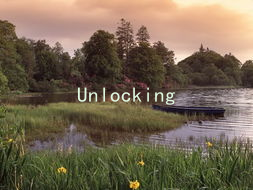Love as an Art Form: Communicating Desires in Relationships
Love as an Art Form: Communicating Desires in Relationships
In the delicate tapestry of human relationships, love is not merely an emotion but a complex art form that requires skill, patience, and creativity. Effective communication is the brush with which we paint the intricate details of our desires, needs, and boundaries in romantic partnerships. Understanding how to articulate these sentiments can transform a relationship, fostering connection and intimacy.
The first step in communicating desires is to understand your own feelings. Before conveying your thoughts to your partner, take the time to reflect on what you truly want. Are you yearning for more quality time together, emotional support, or perhaps a deeper level of intimacy? By identifying your needs, you create a solid foundation for open dialogue.
Once you have clarity on your own desires, the next step is to choose the right moment to express them. Timing plays a crucial role in communication. Initiating a conversation during a stressful time or while your partner is distracted can set the stage for misunderstandings. Instead, seek a peaceful environment where both parties can engage openly. This not only shows respect for your partner but also encourages a more receptive atmosphere.
When you approach your partner, use I statements to express your feelings rather than placing blame or making demands. For example, instead of saying, You never spend time with me, you could say, I feel lonely when we don’t have time together. This approach personalizes the conversation, framing your feelings as an expression of need rather than a criticism, which can lead to a more productive dialogue.
Active listening is equally essential during these conversations. Once you’ve shared your desires, give your partner the space to respond. Show that you value their perspective by maintaining eye contact, nodding, and providing verbal affirmations. This engagement demonstrates that you are not just waiting for your turn to speak, but genuinely interested in understanding their feelings and thoughts.

After expressing your desires, it’s important to invite your partner to share theirs. Encouraging reciprocal communication fosters an atmosphere of mutual respect and understanding. You might ask, How do you feel about spending more time together? This not only opens the line of communication but also shows that you are invested in their needs as well.
Honesty and vulnerability play pivotal roles in effective communication. It can be daunting to expose your desires for fear of rejection; however, vulnerability can strengthen the bond between partners. Being open about what you want helps your partner understand you on a deeper level, paving the way for greater intimacy and connection.
Moreover, be prepared for the possibility of resistance or differing opinions. Not all desires may align perfectly between partners, and that’s okay. The goal is to reach a compromise or understanding rather than to achieve complete agreement. Approach these discussions with empathy and a willingness to negotiate
Finally, ongoing communication is key to keeping the desires of both partners aligned. Relationships evolve, and so do the needs of the individuals within them. Regular check-ins can help ensure that both partners feel heard and valued over time. A simple question like, How are we doing? can serve as a catalyst for a deeper conversation, allowing both partners to reflect on their feelings and desires.
In conclusion, love, when approached as an art form, requires thoughtful communication of desires and needs. By understanding your feelings, choosing the right moment, using I statements, listening actively, and embracing vulnerability, you create a harmonious canvas for your relationship. Remember, the beauty of love lies not just in its presence but in the way we articulate and navigate our desires together.





